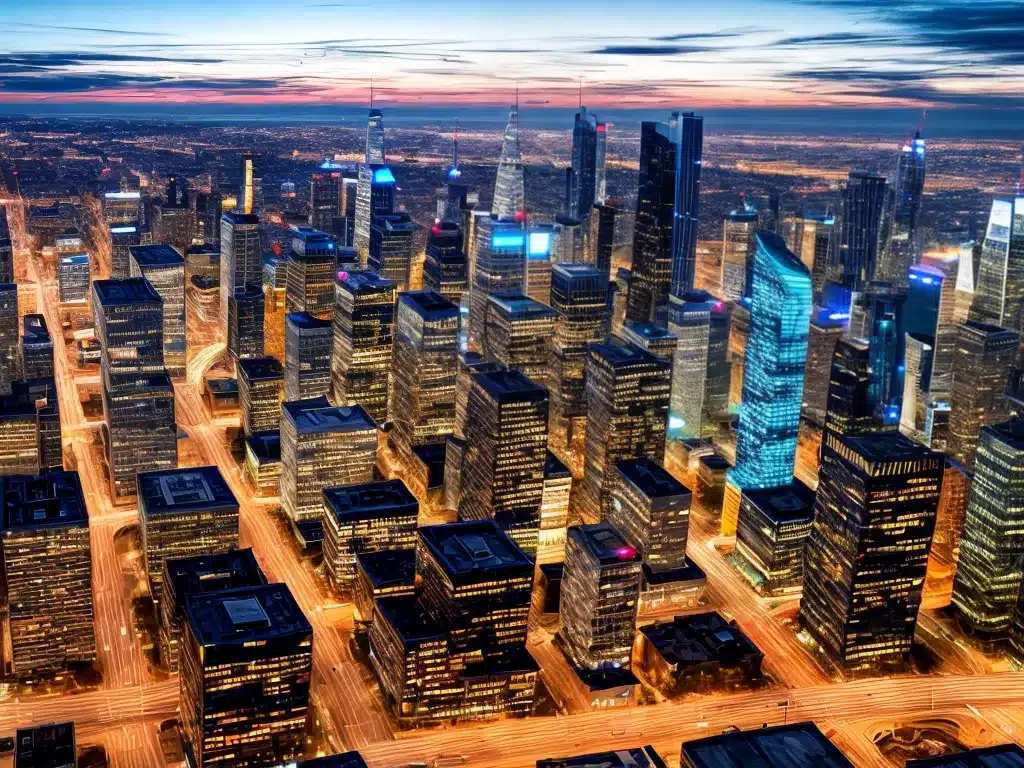How Cities Are Using IoT to Become Smarter and More Efficient
The Internet of Things (IoT) is transforming cities and making them smarter and more efficient. Here is an in-depth look at how cities are utilizing IoT technologies:
Improving Transportation and Mobility
Transportation is one of the key areas where IoT is having a major impact in cities.
Reducing Traffic Congestion
- Cities are installing smart sensors and connected cameras along major roads and highways to monitor traffic conditions in real-time.
- The data enables cities to dynamically adjust traffic light patterns to optimize flow and reduce congestion.
- In Singapore, an intelligent traffic management system has reduced congestion by 15% by changing light patterns based on traffic density.
Enhancing Public Transit
- Sensors installed on buses, trains, and transit stations allow cities to track vehicles in real-time.
- This enables cities to monitor schedules, respond faster to breakdowns, and provide better real-time information to commuters.
- Cities like Chicago have seen public transit usage increase as a result of their open data initiatives around transportation.
Managing Parking and Tolls
- Smart parking sensors monitor available spots across the city and feed information to mobile apps to guide drivers. This reduces time wasted looking for parking.
- Electronic toll collection systems using RFID tags and sensors streamline traffic flow at toll booths, reducing congestion.
Improving Infrastructure Efficiency
IoT sensors are helping cities reduce water leakage, optimize energy usage, and monitor structural integrity.
Reducing Water Wastage
- Leak detection sensors installed throughout water pipelines generate real-time alerts about leaks and bursts.
- Cities can deploy work crews faster to minimize wastage and prevent outbreaks.
- The city of Barcelona used IoT to reduce water leakage from 15% to 2%.
Monitoring Structural Integrity
- Bridges, buildings, and historical monuments are outfitted with a network of IoT sensors.
- Vibration, temperature, tilt, and deformation sensors provide continual monitoring of structural health.
- This helps cities prevent catastrophic infrastructure failures through early diagnosis.
Optimizing Energy Use
- Smart streetlights equipped with light and motion sensors optimize lighting based on traffic and pedestrian flow.
- Smart thermostats and IoT-enabled building management systems reduce HVAC energy consumption.
- Some cities have seen energy savings up to 30% through such initiatives.
Improving Public Safety and Emergency Response
IoT allows cities to prevent and respond better to emergencies through real-time monitoring and automated responses.
Gunshot Detection
- Cities like Chicago have installed sophisticated sensor networks to instantly detect and triangulate gunshots.
- This allows police to dispatch units faster to crime scenes.
- These solutions can detect gunshots with over 90% accuracy and less than 60 second response time.
Flood Prediction
- An extensive grid of water level sensors installed across storm drainage systems can identify flood risks.
- Predictive analytics systems analyze sensor data to forecast floods and provide early flood warnings.
- Cities like Rotterdam are using such systems to reduce flood impact.
Air and Sound Pollution Monitoring
- A distributed network of IoT sensors provides real-time monitoring of air and noise pollution across the city.
- This allows cities to identify problem areas, enforce regulations, issue alerts about hazardous conditions if needed.
Enhancing Citizen Experience
IoT allows cities to provide better information and services to its citizens.
Smart Waste Management
- Smart waste bins use ultrasound sensors to monitor fill levels and optimize trash collection routes.
- This reduces overflow incidents and improves efficiency of waste operations by up to 20%.
- Citizens also get notifications when bins near them get full.
Public WiFi Access
- Smart displays and kiosks installed across the city act as WiFi hotspots and provide access to maps, transit data, and other civic information.
- This enhances quality of life and connectivity for citizens.
Smart Lighting
- Smart street lighting systems allow cities to adjust lighting dynamically based on ambient conditions and needs.
- The city of Los Angeles has used adaptive lighting to reduce energy use and improve night visibility.
In summary, IoT is enabling cities to provide better mobility, enhance infrastructure efficiency, improve public safety, and offer innovative citizen services – making them more livable, sustainable, and efficient. The use cases and impact of IoT on cities will only continue to grow in the future.













